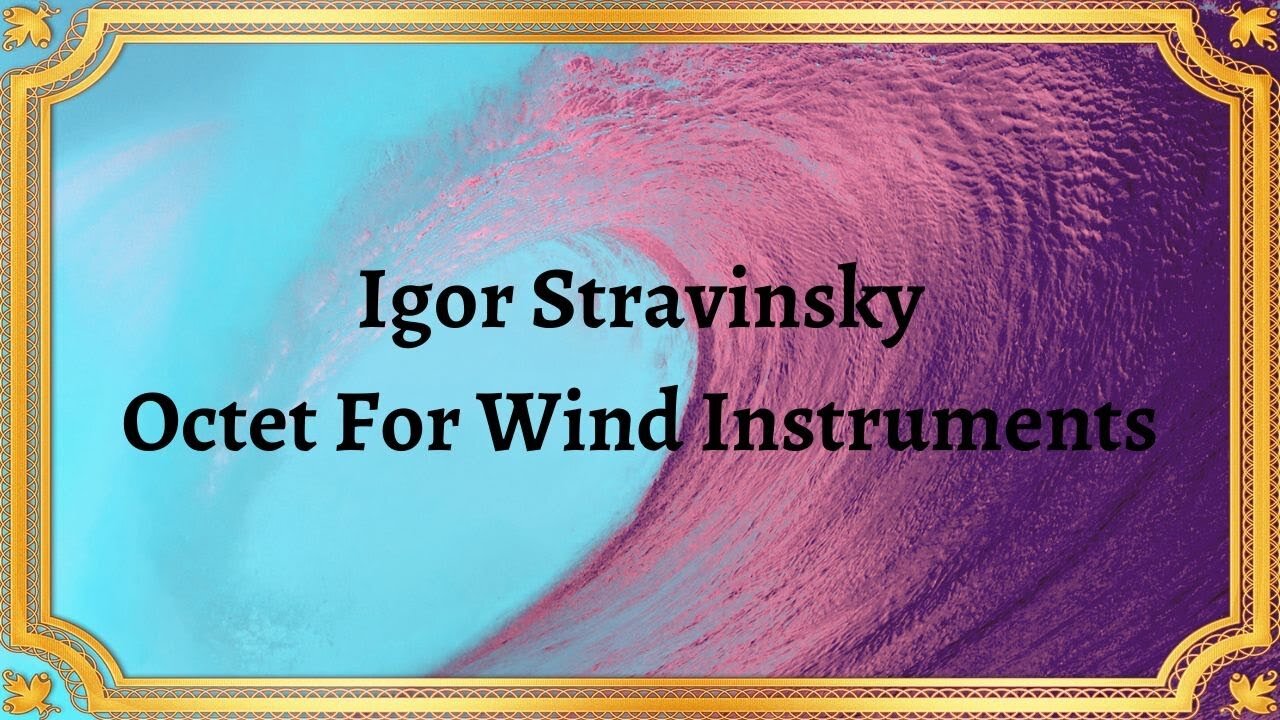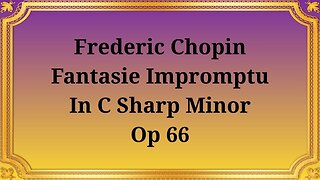Premium Only Content

Igor Stravinsky Octet For Wind Instruments
#classicalmusic #IgorStravinsky #OctetForWindInstruments #neo-classicalera #Baroque #jazz #musicalinstruments #musicalcomposition #musicalgenres #musicappreciation #musicians
Publication date 1950
Leonard Bernstein; Boston Symphony Orchestra
Igor Stravinsky's Octet for Wind Instruments is a ground-breaking musical composition that captures the essence of his musical genius. It is one of his most renowned works of the neo-classical era, presenting a unique blend of traditional and modern musical styles. The piece is a stunning example of Stravinsky's ability to bend traditional forms into something new and innovative.
Composed in 1923, Octet for Wind Instruments was commissioned by the conductor Ernest Ansermet just two years after Stravinsky's successful ballet "The Rite of Spring." At the time of its composition, Stravinsky was exploring the possibilities of neo-classicism, blending the traditions of the past with contemporary compositional techniques and modern instrumentation.
The piece takes inspiration from Baroque compositions and traditional octets, featuring a complex interplay of different wind instruments, including flute, clarinet, oboe, bassoon, horn, trumpet, trombone, and bass trombone. The composition is structured in three distinct movements, each of which takes a unique and creative approach to exploring this unique instrumentation.
The first movement, titled "Sinfonia," begins with a rich, layered dialogue between the wind instruments that combines intricate melodies with rich harmonies. Despite its neo-classical structure, the dynamic and unpredictable nature of the piece connects it to the rhythms and tonalities of modern jazz.
The second movement, "Tema con variazioni," provides a stark contrast to the first, opening with a simple, delicate statement that transforms through a series of modulations and variations. The piece's rich harmonies and unpredictable rhythms are carried through into this movement, which explores the resonant qualities of the wind instruments.
The third and final movement, "Finale," is a rousing and energetic conclusion to the piece. Stravinsky masterfully weaves the different wind instruments together, culminating in a thrilling and joyous finale that showcases the brilliant interplay of the octet.
Octet for Wind Instruments stood out from the works of other composers of the time due to its unusual instrumentation and innovative approach to composition. Stravinsky had taken an established classical form and reimagined it for the modern world, cementing his position as one of the most important composers of the 20th century.
In conclusion, Igor Stravinsky’s Octet for Wind Instruments is a masterpiece that showcases his exceptional talent in blending diverse musical styles to create something truly compelling.
You have the opportunity to support the channel https://destream.net/live/RadSiarAl/donate
-
 4:24
4:24
Classical music_Music Inspiration
1 month agoFrederic Chopin Fantasy-Impromptu in C-sharp minor, Op 66
831 -
 17:12
17:12
World2Briggs
18 hours ago $0.01 earnedTop 10 Towns You Can Retire or Live on $1900 a month in the Midwest #1
9.59K1 -
 17:25
17:25
BlackDiamondGunsandGear
1 day agoCustom Building the Cheapest MP5
13.6K1 -
 LIVE
LIVE
BEK TV
23 hours agoTrent Loos in the Morning - 11/06/2025
177 watching -
 8:10
8:10
The Shannon Joy Show
17 hours agoShould we even VOTE anymore?
17.1K23 -
 59:34
59:34
Dialogue works
1 day ago $0.02 earnedMohammad Marandi: It’s WAR: Iran’s Supreme Defense Council ACTIVATES –Hezbollah REFUSES to Surrender
49.9K11 -
 10:23
10:23
TheSaltyCracker
18 hours agoMuslims Immediately Threaten New Yorkers After Zohran Win
43.7K456 -
 18:40
18:40
Actual Justice Warrior
17 hours agoMamdani Pledges To DESTROY New York
30.7K75 -
 28:53
28:53
iCkEdMeL
17 hours ago $0.06 earnedBREAKING: 9 DEAD After UPS Plane BURSTS Into Fireball at Louisville Airport
35.1K7 -
 20:52
20:52
Professor Nez
20 hours agoThe TRUTH is Actually WORSE than we Thought...
24.6K24